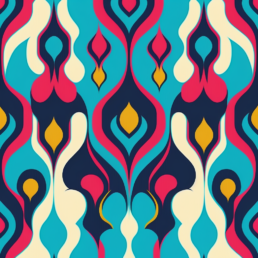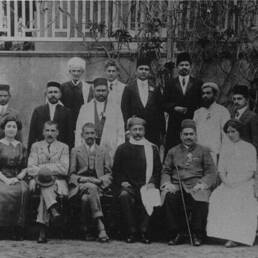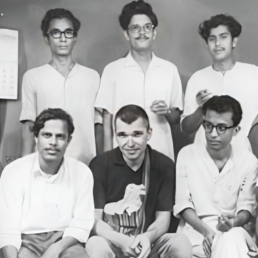Over 700 years ago, a nomadic tribe from Rajasthan realized that there was no fixed temple they could visit with their constant roving. They, thus, created temples that could travel with them which subsequently introduced one of the richest artforms of the country.
Phad, meaning ‘to unravel’ in the regional dialect, originated in the Shahpura region of Rajasthan. It’s a form of painting made on large scrolls.
The artform is traditionally accompanied with an elaborated song, dance, and story-telling performance by a priest and his wife, known as ‘Bhopa’ and ‘Bhopi’, who belong to the Rabari tribe of nomadic cattle and camel herders.
The tribe travelled from one village to another, playing their ‘Ravanhatta’ – a two-string instrument, performing dramatic renditions of stories of Devnarayan and Pabuji folk deities using Phad as a visual aid.
The songs were performed by the Bhopa while the Bhopi would follow along with a lamp, illuminating the section of the painting her husband was singing about. This fascinating piece of art is completely handmade.
The process of making a Phad starts with soaking a handwoven parchment cloth overnight to make the threads thicker. The parchment is then starched and burnished for a smooth surface to allow ease of drawing. The colors used in Phad are fascinatingly extracted from crushing stones.
Each color is strictly used to represent different objects. Orange for limbs, yellow for ornaments and clothing, green for nature, brown for architectural designs and red to symbolize royal clothing. Black is used at the end to paint the borders.
The most important detail of Phad, however, is drawing the eyes of the deity. It is believed that the artist would give ‘life’ to the deity by opening the pupils thus making the creation more than a mere work of art, making it a traveling temple.
Historically, the scarcity of resources has produced the best inventions around the world. Phad was predominantly introduced due to the lack of temples of Devnarayan and Pabuji deities. Nevertheless, it was a gain for India as it witnessed one of the finest cultural art forms.
Due to the lack of permanence of natural colors, low durability of the handwoven cloth and emergence of digital art, Phad slowly became a lost art – a poignant reminder of one of the earliest forms of storytelling, deeply rooted to our cultural heritage.
Sources:
Nine Lives by William Dalrymple
Image courtesy:
scroll.in
Wikimedia
travelscopeindia.com
Video courtesy:
indiaartfair.in




